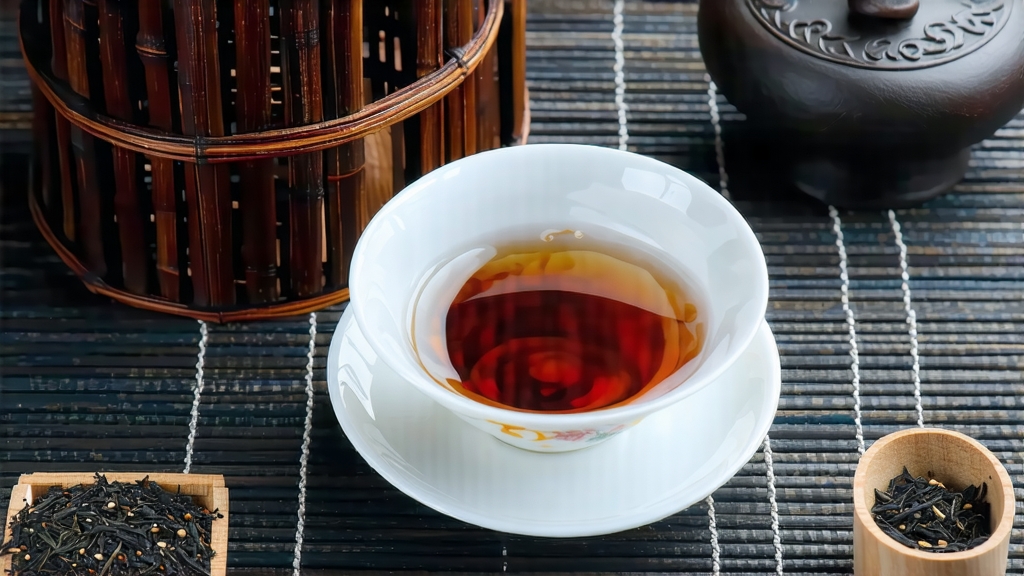
Ask most tea lovers to name China’s oldest black tea and they will answer “Keemun” or “Yunnan Gold.” In fact, the honor belongs to Lapsang Souchong, the rugged, pine-smoked pioneer born in the precipitous Wuyi Mountains of northern Fujian during the late Ming dynasty. When Dutch merchants first carried this dark, twisted leaf to Europe in 1604, Europeans had never tasted fully oxidized tea; the word “black” was coined to describe its color, and the island nation that would become the world’s largest tea drinker—England—built an empire of cups upon it. From the original Souchong sprang every other Chinese red tea, India’s Assam and Darjeeling bushes, and even the bergamot-scented Earl Grey. To sip Lapsang Souchong is therefore to taste the watershed moment when tea stepped out of green’s shadow and into the smoky dawn of global trade.
History: From Misty Cliff to London Coffeehouse
Local legend says the smoke-drying technique was discovered by accident. In 1646 Qing soldiers quartered themselves in Tongmu village, commandeering the fresh leaf that farmers had spread on bamboo trays. By the time the troops left, the leaves had withered overnight; to meet the next day’s market boat, the farmers rushed the oxidation and dried the tea over fires of masson pine and cypress. The resulting liquor—brick-red, resinous, strangely sweet—sold instantly in Xiamen’s port. The Dutch, already trading porcelain and silk, bought every chest and shipped it to Java, then Amsterdam. Within fifty years “Bohea Tea” (a corruption of “Wuyi”) dominated London auctions, fetching prices higher than green teas because it survived the six-month voyage without losing flavor. By 1700 the British East India Company was paying for Lapsang Souchong with silver bullion, prompting Queen Anne to legalize tea imports at a punitive 119 % ad valorem duty. The Boston Tea Party chests that colonists dumped in 1773 were largely pine-smoked Souchong; the leaf that sparked revolution became the leaf that financed it.
Micro-terroir: Tongmu’s Impossible Valley
Authentic Lapsang Souchong can only be produced inside the 565 km² core zone of the Wuyi UNESCO Biosphere Reserve, where the Huanggan River has carved a V-shaped canyon so narrow that noon feels like dusk. The humid subtropical air rises 1,200 m, collides with cold mountain downdrafts, and condenses into a perpetual fog that acts like a natural shade cloth, slowing photosynthesis and concentrating amino acids. Soils are Jurassic-era volcanic tuff, porous and mineral-rich; drainage is so sharp that rainwater vanishes within minutes, forcing tea roots to dive three meters for water, absorbing potassium and magnesium that later translate into cocoa-like sweetness. Because the reserve bans outside tea leaf, every kilo is literally forest-grown; wild cinnamon, orchid, and rhododendron contribute their pollen to the leaf surface, adding subtle floral top notes that balance the smoke.
Cultivars: Three Faces of Souchong
Although foreigners use “Lapsang” as a catch-all, Tongmu farmers recognize three distinct cultivars, each harvested in micro-seasons dictated by elevation and leaf posture.
-
Xiaozhong (Small Leaf): Planted at 600–800 m, the original heirloom strain brought from Anxi in the 16th century. Leaves are barely 3 cm long, yielding a gentle pine note and a honeyed finish reminiscent of dried longan. Only 800 kg are made per spring.
-
Feizixiao (Purple Bud): A 1950s clonal selection whose spring buds flush burgundy under high-altitude UV. The anthocyanin layer adds a blackcurrant tang that marries unexpectedly well with smoke, creating a wine-like depth prized by Russian tea houses.
-
Jinxuan Souchong: A 1999 experiment grafting the famed Taiwanese “Milk Oolong” cultivar onto Tongmu rootstock. The hybrid retains the natural milky lactone but absorbs pine resin, producing a cup that tastes like smoked custard—bizarre, addictive, and already cult among Nordic baristas who use it for smoked tea lattes.
Craft: The Eight-Step Ballet of Smoke and Fire
Making Lapsang Souch